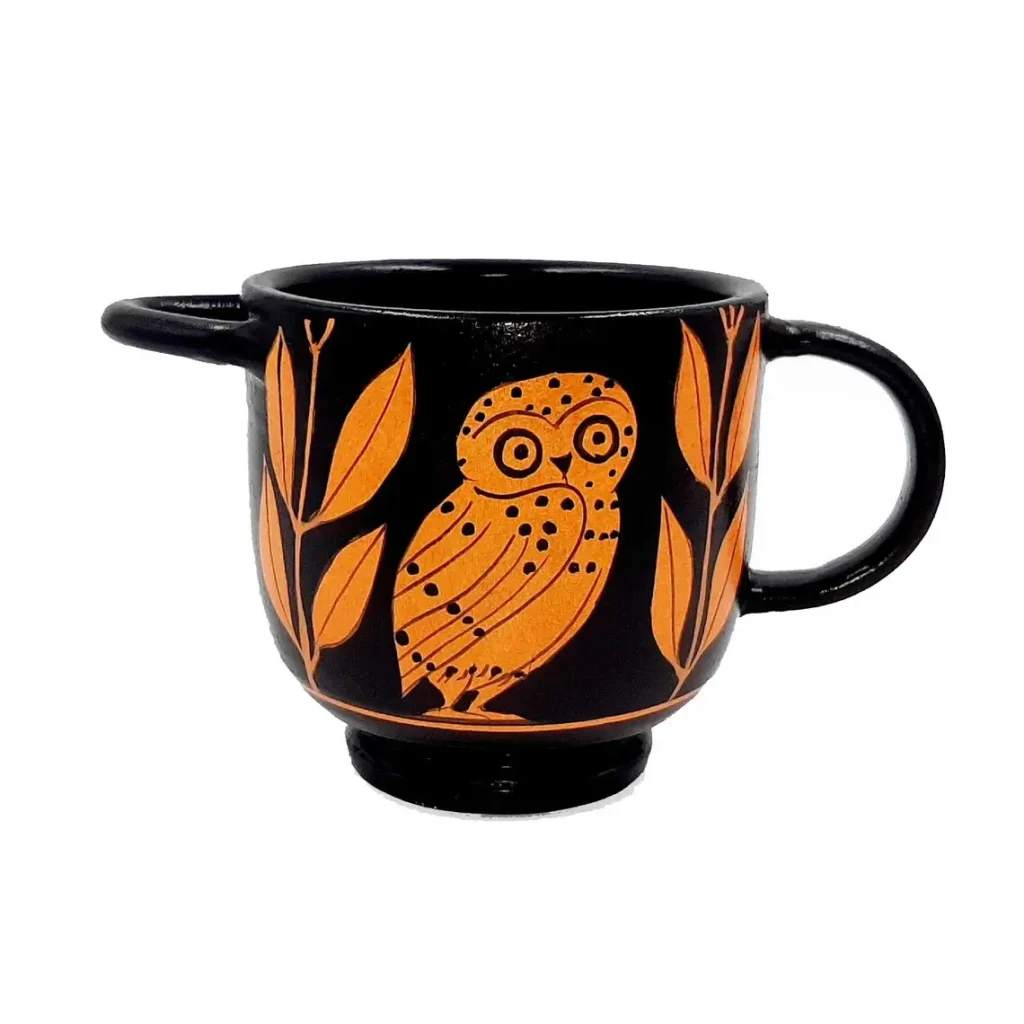Types of famous Greek ceramics
In this guide we are going to define the types of Greek ceramics in terms of their shape, that is to say, which are the main pieces and their characteristics.
This classical art evolved over time, but the most representative forms remained throughout the different periods and styles of pottery in Greece.
Below you can download the free pdf with the most famous pottery of Greek art.

Get to know the main types of classical Greek ceramics
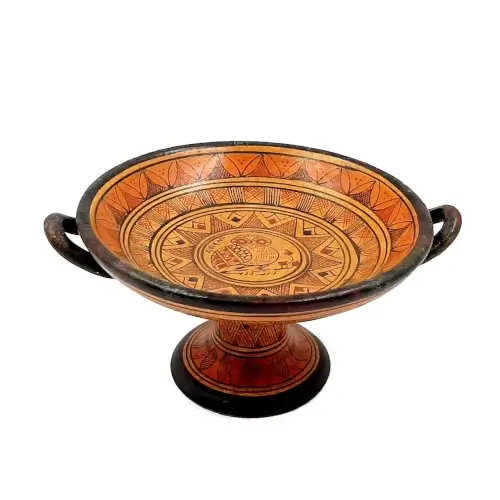
Kylix
It was a type of glass used mainly for drinking wine in ceremonies and celebrations.
Its characteristic design includes a rounded base, thin stem, a wide and shallow body, and handles for easy handling.
Kylix were often decorated with scenes from Greek mythology, daily life or festive activities, it was an especially famous type of cup during the 5th and 4th centuries BC.
Go to Greek Kylix page
Krater or crater
They were also used to mix wine with water. They had a wide body and a solid base, usually complemented by a wide mouth. Their handles could be horizontal, near the base, or vertical, ascending from the shoulders of the vessel. This shape allowed efficient mixing of the two liquids.
They were usually placed in the center of the room, showing their importance in the act of sharing and socializing. Their considerable size meant that they were not easy to move once filled, so the wine was drawn and served in smaller glasses for the guests.
Go to the page about the Greek Krater
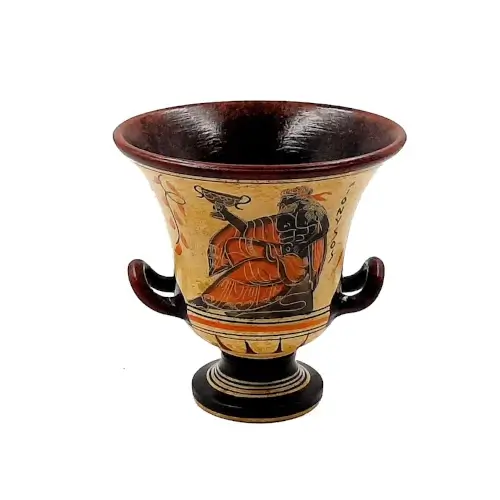
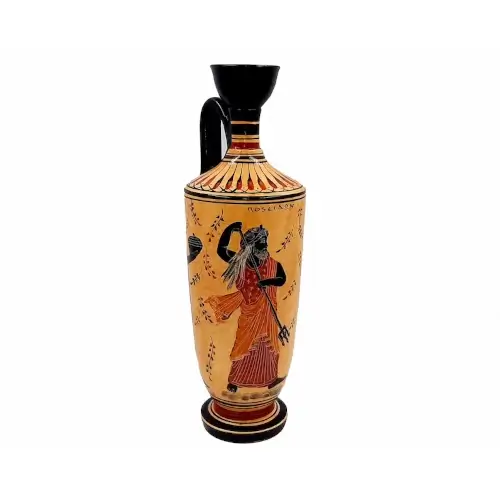
Lécito or lekythos
The Lécito was an ancient Greek vessel used primarily for storing oil, especially olive oil.
Its distinctive shape consists of a narrow, elongated body that widens gently towards the base, with a narrow neck to which a single handle is attached from the mouth to the middle of the body.
It does not have a lip for pouring. It has vertical sides at the top of the body that then abruptly change direction as the neck curves inward, and both the base and mouth are usually prominent and flared.
Go to the page about the Greek Lecithus
Amphora
The amphora was an ancient storage vessel with two vertical handles and a neck narrower than the body. There were two main types: the neck amphora, where the neck joins the body at an acute angle, and the one-piece amphora, where the neck and body form a continuous curve.
Used from the Geometric period to Roman times, amphorae were used to store and transport products such as olives, cereals, oil and wine. Larger variants were used for funerary purposes and as grave markers.
Go to Greek Amphora page
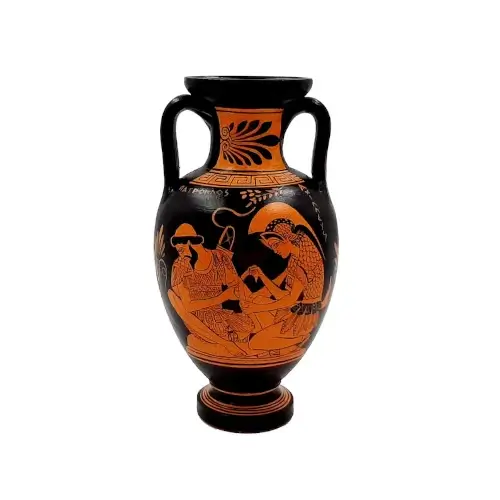
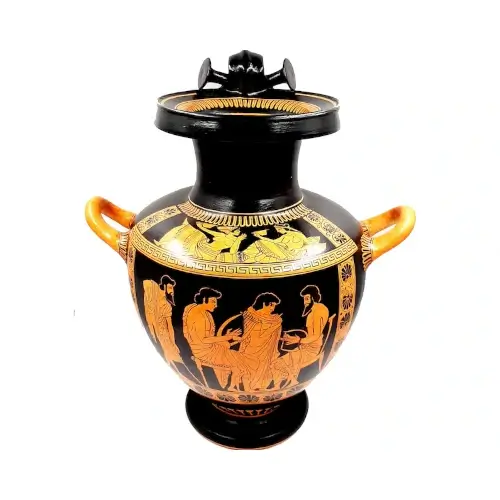
Hydria
The hydria was a water vessel very characteristic of ancient Greek pottery, notable for its three handles: two horizontal ones on the sides to lift it and a vertical one on the neck or shoulder for dipping and pouring. They used to measure about 45 cm in height to be able to hold enough water and at the same time to have a manageable weight once filled.
This design was common in both black-figured styles and red-figured pottery of the Archaic and Classic periods.
Hydrias were mainly used to collect and store water, but they also appear in funerary and ritual contexts.
Go to the Greek Hydria page
Oenochoe
It was a classical Greek wine jug, characterized by a curved handle and a clover-shaped mouth. This type of jug was mainly used to serve wine in various ceremonies and daily activities.
Its unique design facilitated the pouring of wine in a controlled manner. During the Renaissance and again in the Neoclassical period of the 18th century, the enocoe design was revived, highlighting its enduring aesthetic and functional appeal.
Go to the page about Greek Oenochoe

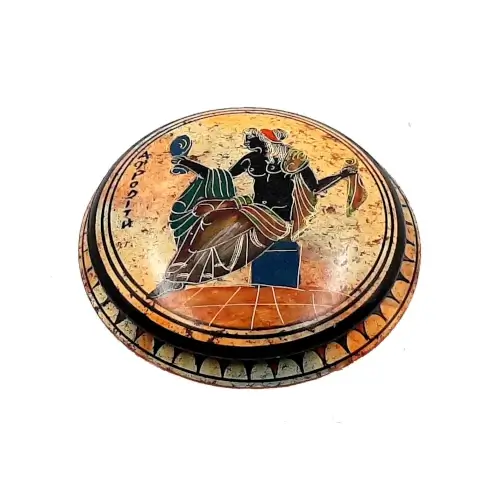
Pyxis
They were globular vessels, especially in the protogeometric period, evolving to have flat and wide bases during the later geometric period.
It was used to contain cosmetics, jewelry or even medicines.
Mostly made of ceramic, they could also be made of wood, bronze, ivory, marble, silver or stone.
Go to the Greek Pyxis page
Skyphos
It was a type of wine glass that had a certain depth, it was characterized by two handles and a low base with or without a rim. The handles could be horizontal, in the shape of an ear, or vertical, separated from the body of the glass. Both types of handles could even be included in the same piece.
Although they were for social and ceremonial use, they were also used in everyday life in the homes of ancient Greece.
Go to the page about Greek Skyphos
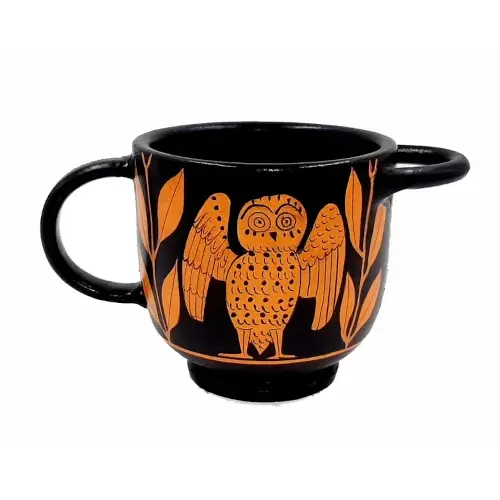
The incredible reproductions you see in this guide are handmade by the artisans of Ancient Greek Ceramics.

Famous pieces of Greek art pottery
You can download the pdf with the list of the most emblematic and well-known works of Greek pottery that we have just talked about, so that you can have it with you.
Buy unique Greek reproductions
Fortunately, there are artisans who make reproductions identical to the classical works of art that were made in ancient Greece and are only found in museums, making them affordable.

Note: This article contains links that lead to the artists’ stores on other non-Ceramicartis sales sites. If you make a purchase there, we will receive a small commission that will help us continue the site and in turn continue to support their work. This does not increase the selling price of the artist.
We hope you liked this post. It will help us if you share it on social networks 👍
All about the famous pottery of Greece:





